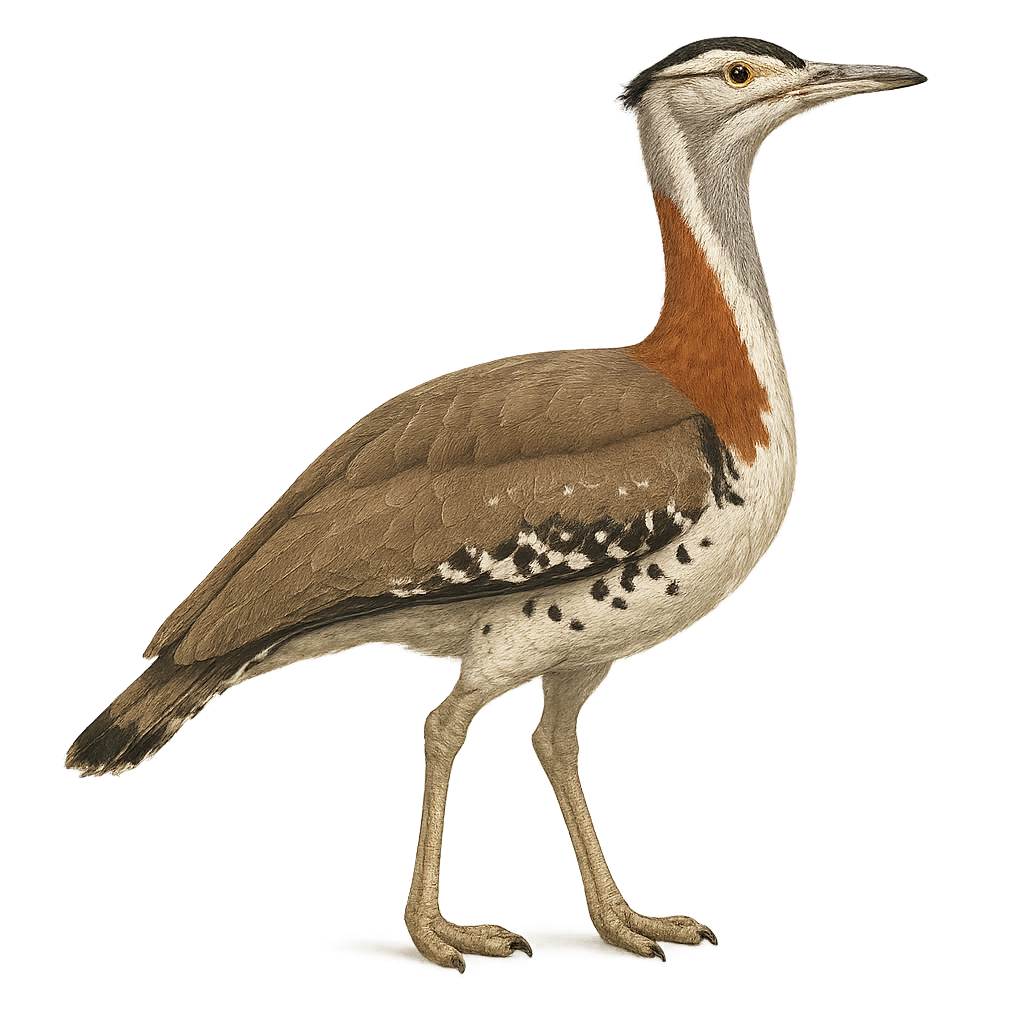Your wildlife photography guide.
Explore the denham's bustard in detail, study its behavior, prepare your shots.
Where to observe and photograph the denham's bustard in the wild
Learn where and when to spot the denham's bustard in the wild, how to identify the species based on distinctive features, and what natural environments it inhabits. The WildlifePhotographer app offers tailored photography tips that reflect the denham's bustard’s behavior, helping you capture better wildlife images. Explore the full species profile for key information including description, habitat, active periods, and approach techniques.
Denham's Bustard
Scientific name: Neotis denhami

IUCN Status: Near Threatened
Family: OTIDIDAE
Group: Birds
Sensitivity to human approach: Suspicious
Minimum approach distance: 50 m
Courtship display: September to December
Incubation: 23-26 jours
Hatchings: September to January
Habitat:
Savannas, open grasslands, shrublands
Activity period :
Primarily active during the day, with peak activity in the morning and late afternoon.
Identification and description:
The Denham's Bustard, or Neotis denhami, is a large terrestrial bird found mainly in sub-Saharan Africa. It is recognizable by its brown and white plumage, with distinctive patterns on the wings and back. Males are generally larger than females and sport a black crest on their heads. This bird prefers open savannas and grasslands, where it primarily feeds on insects, small vertebrates, and seeds. Although generally solitary, it can be observed in small groups during the breeding season. The species is threatened by habitat loss and hunting, leading to population declines in some areas.
Recommended lens:
400 mm – adjust based on distance, desired framing (portrait or habitat), and approach conditions.
Photography tips:
To photograph the Denham's Bustard, it is advisable to use a telephoto lens of at least 400mm to capture detailed images without disturbing the bird. Since this bird is suspicious, it is important to maintain a safe distance of at least 50 m. Look for open areas such as savannas or grasslands where the bird is more likely to forage. Morning or late afternoon light can provide ideal conditions for photography, highlighting the distinctive patterns of its plumage.
The WildlifePhotographer App is coming soon!
Be the first to explore the best nature spots, track rutting seasons, log your observations, and observe more wildlife.
Already 1 431 wildlife lovers subscribed worldwide

